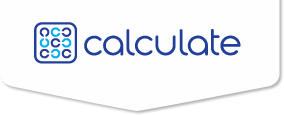Why ADA Compliance Is Critical for Higher Education Websites
In higher education, a university’s website is more than a marketing tool — it’s the gateway to academics, campus life, athletics, admissions, and so much more. Prospective students research admissions and financial aid, parents explore tuition and campus life, faculty share course materials, and alumni engage with programs. For students with disabilities, however, many higher-ed websites still present barriers that prevent equal access.
This is where the Americans with Disabilities Act (ADA) and related accessibility standards come into play. Digital accessibility is not just a legal requirement — it’s a moral and practical necessity. In this article, we’ll break down why ADA compliance matters, what the law requires, highlight key lawsuits that have reshaped expectations, and provide practical guidance for institutions to move forward.
The Legal Framework: ADA and Section 504
Two major U.S. laws govern accessibility for colleges and universities:
- ADA (Americans with Disabilities Act)
Public colleges and universities fall under Title II of the ADA , while private institutions are covered by Title III. Both prohibit discrimination against people with disabilities and apply to digital spaces, including websites, apps, and online learning platforms.
- Section 504 of the Rehabilitation Act
Any institution that receives federal funding must ensure that individuals with disabilities have equal access to programs and services—including digital resources. ( U.S. Dept. of Education Section 504)
- The DOJ’s 2024 Final Rule for Title II
In April 2024, the U.S. Department of Justice issued a landmark rule clarifying that websites and mobile apps are subject to accessibility requirements. Public colleges and universities must conform to WCAG 2.1 Level AA standards on a defined timeline: large entities by April 2026, smaller entities by April 2027.
Even though private institutions are not explicitly bound by this rule, courts and regulators increasingly point to WCAG 2.1 AA as the benchmark for ADA compliance.
Lessons from Lawsuits: What Happens When Schools Fall Short
The importance of compliance isn’t theoretical — several high-profile lawsuits and DOJ settlements underscore the risks of inaccessible digital platforms:
- Harvard University (settled 2019)
The National Association of the Deaf sued Harvard for failing to provide captions on publicly available online videos and course materials. Harvard settled by agreeing to comprehensive captioning standards.
- MIT (settled 2020)
Following a similar NAD lawsuit, MIT reached a settlement requiring captioning of online content.
- UC Berkeley (DOJ agreement 2022)
The Department of Justice required Berkeley to make thousands of publicly available lectures and digital resources accessible, particularly its video library.
- Miami University, Ohio (consent decree 2016)
The DOJ intervened after complaints that Miami’s websites and LMS were inaccessible. The settlement agreement required compliance with WCAG 2.0 AA and systemic reforms.
- Penn State University (settlement 2011)
The National Federation of the Blind reached a settlement with Penn State requiring accessibility improvements across websites and instructional technology.
- Louisiana Tech University (DOJ settlement 2013)
After a blind student couldn’t access an online homework system, Louisiana Tech entered a settlement agreement requiring accessible instructional technology.
These cases illustrate a clear pattern: when digital barriers exist, institutions are vulnerable to lawsuits, settlements, and federal enforcement.
Why Accessibility Benefits Everyone
While lawsuits highlight the risks, accessibility also offers clear benefits that extend beyond compliance:
- Equity and Inclusion
Ensuring that students with disabilities can access digital resources reinforces a university’s mission to serve all learners.
- Recruitment and Retention
Prospective students often begin their journey on a university’s website. If applications, financial aid information, or program pages are inaccessible, schools risk losing applicants.
- Reputation
Institutions that fail to prioritize accessibility may face public criticism. Conversely, those that lead in this area showcase their commitment to inclusivity.
- Improved Usability for All
Features like clear navigation, properly structured content, and captioned videos improve the user experience for everyone.
- Operational Efficiency
Designing with accessibility in mind reduces last-minute accommodations and prevents costly rework.
What WCAG 2.1 AA Means in Practice
The Web Content Accessibility Guidelines (WCAG) provide a framework for making digital content accessible. Key principles include:
- Perceivable
Provide text alternatives for images, captions/transcripts for video and audio, and adequate color contrast.
- Operable
Ensure all functionality is available via keyboard, provide clear focus indicators, and avoid time limits that disadvantage users.
- Understandable
Use consistent navigation, clear labels, and simple instructions.
- Robust
Build content that works with assistive technologies like screen readers.
A Practical Roadmap for Higher-Ed Institutions
- Audit and Inventory
- Review all web properties, LMS platforms, forms, and media libraries.
- Identify high-traffic or high-risk areas (admissions, tuition, program pages).
- Quick Wins
- Fix simple but impactful issues like missing alt text, low color contrast, and unlabeled form fields.
- Begin captioning priority videos.
- Systemic Improvements
- Update CMS templates, design systems, and LMS shells with accessibility baked in.
- Require vendors to meet WCAG standards through procurement contracts.
- Training and Governance
- Train faculty, staff, and content creators on accessible practices.
- Adopt an official Accessible Technology Policy.
- Sustainability
- Establish ongoing monitoring and feedback mechanisms.
- Publish an accessibility statement and progress reports.
The Bottom Line
ADA compliance is no longer optional for higher education—it is a legal, ethical, and strategic imperative. With the DOJ’s 2024 rule setting clear standards and timelines, institutions that act early will be better positioned to serve students equitably, avoid costly lawsuits, and strengthen their reputations as inclusive leaders.
Accessibility is not just about compliance; it’s about ensuring that every student—regardless of ability—can fully participate in the digital campus experience.
Free ADA Compliance Scan & Report
Accessibility is essential — for your audience and your organization. Fill out the form below, and we’ll perform a free, comprehensive scan of your website. You’ll receive a detailed report with your ADA compliance score, plus clear insights on areas for improvement.

